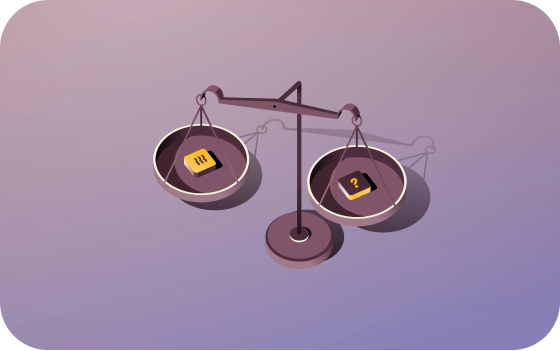A fixed-term employee is an individual hired under a contract that has a predetermined end date or ends upon the completion of a specific project. These employees have the same rights as permanent employees, but their employment automatically ends when the term or project is complete.
What is a fixed-term contract?
A fixed-term employment contract is a work agreement that specifies a predetermined end date or the completion of a particular project. Fixed-term contracts are used when the employment need is temporary, such as for covering another employee’s maternity leave, or for seasonal work or a specific project. These contracts clearly define the duration of employment and the conditions under which the employment will end.
See below for more details on this employment arrangement and how it differs from other common types of employment contracts.
How is a fixed-term contract different from a permanent contract?
Permanent employees are what you’re probably most familiar with. They’re hired for permanent positions that can be part-time or full-time, and they work indefinitely, until they either resign or their employment is terminated by their employer. They may have an employment agreement that outlines and defines all the terms of their employment.
A fixed-term employee can also be part- or full-time, but the employee works only until their contract ends. In many ways, fixed term employment is similar to permanent employment — workers enjoy many of the same employment rights and protections, and often receive similar perks like sick leave, accrued time off, and other benefits offered to permanent employees.
The main differences are:
- Duration: A fixed-term contract has a specified end date or is tied to a specific period of time or the completion of a project, whereas a permanent contract has no predetermined end date and continues indefinitely.
- Job security: Permanent employees generally have more long-term job security
- Termination: Fixed-term employment automatically ends when the contract period or project concludes, while permanent employment continues until the employee resigns or is terminated.
How is a fixed-term contract different from an indefinite contract?
An indefinite contract is the same as a permanent contract, so this is the same as the above: A fixed term contract lasts for a specified period outlined in the contract, while an indefinite contract represents and ongoing employment relationship with no specified end date that only ends when the employee resigns or is terminated by their employer.
How is a fixed-term contract different from a casual contract?
A casual contract is also a shorter-term contract, but it’s more typical for freelancers or gig workers who might be considered self-employed. Casual contract employees might fill the same types of roles as those on fixed-term contracts, but a casual employee generally isn’t guaranteed a minimum number of hours, ongoing employment, or specific employee rights and benefits that freelancers aren’t typically entitled to under employment law.
The main differences are:
- Schedule: Fixed-term employees typically work regular hours and have a set schedule, whereas casual employees work on an as-needed basis with no guaranteed hours.
- Commitment: Fixed-term contracts involve a commitment for a specific period, while casual contracts provide more flexibility but less job security for employees.
What to include in a fixed-term contract
When writing a fixed-term employment contract, you should include the following:
- Job title and description. Clearly outline the role and responsibilities of the fixed-term employee.
- Compensation. Include the salary or wage rate, payment frequency, and any additional compensation, including bonuses, benefits, allowances, etc.
- Collective bargaining agreements that will apply to the employee and their terms.
- Performance review criteria, including when performance reviews take place and what happens if they don’t get a satisfactory review.
- Termination clause. Include notice periods and terms for early termination by either party. This can help avoid claims of unfair dismissal, and help you avoid paying the employee’s salary for the entire term of the contract if they’re terminated prior to its end date.
- Period of employment. Specify the employment start date and the predetermined end date or project completion criteria.
- Contract renewal. Include if and how the contract can be renewed, and whether the contract renews automatically. Does a new contract need to be signed? If it renews, will the employee have successive fixed term contracts or become an indefinite employee?
What types of positions require a fixed-term contract?
Fixed-term contracts are commonly used for:
- Project-based roles, such as positions tied to the completion of a specific project.
- Seasonal work (jobs that are needed only during certain times of the year).
- Temporary coverage to cover for employees on leave, such as maternity or medical leave.
- Special assignments, such as positions created for specific, time-bound assignments or events.
Are fixed-term contracts “at-will” agreements?
Fixed-term contracts are generally not considered "at-will" agreements, but this can vary depending on state and local labor laws.
When to hire a fixed-term employee
Employers should consider hiring fixed-term employees when:
- They have a need for specialized skills or expertise for a specific project.
- Their workload increases temporarily, such as during peak seasons.
- They need coverage for permanent employees on leave.
- They’re conducting pilot programs or temporary initiatives.
Pros and cons of hiring fixed-term employees
Payroll Aggregators
Rippling
Flexibility: Fixed-term employment allows employers to meet short-term staffing needs without long-term commitments.
Lack of security: Fixed-term employees may have less job security and fewer benefits compared to permanent employees.
Cost-effective: Fixed-term employment can be more cost-effective than permanent hires, especially for short-term projects.
Training costs: Frequent hiring and training of new fixed-term employees can be time-consuming and costly.
Specialized skills: Fixed-term employment provides access to specialized skills and expertise for specific tasks or projects.
Employee morale: Fixed-term employment can affect employee morale and engagement due to the temporary nature of the role.
Ease of termination: Fixed-term employment automatically ends at the contract's conclusion, simplifying the termination process.
How do you terminate a fixed-term employee?
Termination of a fixed-term employee occurs automatically at the end of the contract period or upon project completion. However, if early termination is necessary, employers should:
- Review the contract. Check the termination clause in the fixed-term contract for any conditions or notice periods required for early termination.
- Provide the employee with appropriate notice as outlined in the contract.
- Document the reasons for early termination and ensure compliance with any legal or contractual obligations.
- Conduct an exit interview to address any concerns and gather feedback for future improvements.
Disclaimer: Rippling and its affiliates do not provide tax, accounting, or legal advice. This material has been prepared for informational purposes only, and is not intended to provide or be relied on for tax, accounting, or legal advice. You should consult your own tax, accounting, and legal advisors before engaging in any related activities or transactions.











































































































